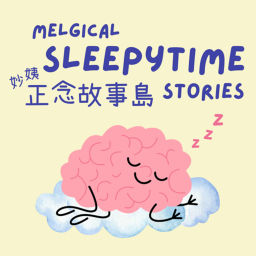
<p style="color:#333333;font-weight:normal;font-size:16px;line-height:30px;font-family:Helvetica,Arial,sans-serif;hyphens:auto;text-align:justify;" data-flag="normal"> 小提琴,是一种弦乐器。总共有四根弦。靠弦和弓摩擦产生振动,进而通过共鸣箱内的音柱将振动传导至背板,由这几部分产生的共振,发出和谐明亮琴音。小提琴琴身(共鸣箱)长约35.5厘米,由具有弧度的面板、背板和侧板粘合而成。面板常用云杉制作,质地较软;背板和侧板用枫木,红木,质地较硬。琴头、琴颈用整条枫木,指板用乌木。</p><p style="color:#333333;font-weight:normal;font-size:16px;line-height:30px;font-family:Helvetica,Arial,sans-serif;hyphens:auto;text-align:justify;" data-flag="normal"> 小提琴广泛流传于世界各国,是现代管弦乐队弦乐组中最主要的乐器。它在器乐中占非常重要的地位,是现代交响乐队的支柱,也是具有高难度演奏技巧的独奏乐器,与钢琴、古典吉他并称为世界三大乐器。</p><span><br /></span><p style="color:#333333;font-weight:normal;font-size:16px;line-height:30px;font-family:Helvetica,Arial,sans-serif;hyphens:auto;text-align:justify;" data-flag="normal">起源</p><p style="color:#333333;font-weight:normal;font-size:16px;line-height:30px;font-family:Helvetica,Arial,sans-serif;hyphens:auto;text-align:justify;" data-flag="normal"> 弦乐器的起源可以追溯到古老的过去。关于小提琴的起源,音乐史学家们持多种观点,有的认为起源于古希腊,有的认为起源于北非,有的认为起源于印度,也有的认为起源于西欧。</p><p style="color:#333333;font-weight:normal;font-size:16px;line-height:30px;font-family:Helvetica,Arial,sans-serif;hyphens:auto;text-align:justify;" data-flag="normal"> 古希腊传说中的天神阿波罗最喜欢摆弄的乐器是里拉琴(Lyra)。里拉琴从外观上看和竖琴有些神似,在共鸣箱上张一根琴弦﹐用手指弹奏发声,常用于诗朗诵配乐。很多专家认为里拉琴是小提琴、竖琴、吉他等众多现代弦乐器的先祖。古希腊的里拉琴按照类别应当归属于弹拨弦乐器,并没有使用弓子演奏。</p><p style="color:#333333;font-weight:normal;font-size:16px;line-height:30px;font-family:Helvetica,Arial,sans-serif;hyphens:auto;text-align:justify;" data-flag="normal"> 弓弦拉奏的演奏方式,普遍认为是亚洲人发明的。传说在5000年前的斯里兰卡,一位名叫瑞凡那的君主将圆柱形的木头掏空制作成了一种名叫瑞凡那斯龙的弦乐器,这种乐器随着贸易往来流传到世界各地,逐渐演变成各类弦乐器。而印度人和波斯人习惯于将马作为家畜饲养,便就地取材以马尾为原材料制作弓毛,例如波斯的凯曼革(Kemangeh),便是以马尾做弓毛,以木材做弓杆,琴弦安装在圆形的共鸣箱上,通过弓子与弦的按压接触发声。</p><p style="color:#333333;font-weight:normal;font-size:16px;line-height:30px;font-family:Helvetica,Arial,sans-serif;hyphens:auto;text-align:justify;" data-flag="normal"> 埃及的拉弦乐器列巴普(Rebab)、,摩尔人的列别克(Rebec)等乐器比波斯的凯曼革更进一步,在共鸣箱的形状方面进行了创新探索,将共鸣箱做成梯形或椭圆形等多种形态﹐并尝试着在共鸣箱的面板上开孔,用弓子拉弦演奏。日耳曼人使用的乐器库鲁斯琴(Cruth)进一步增加了指板和琴马,琴马两侧开孔,并探索实践了弯曲的共鸣箱形状。这些尝试让乐器制作工艺向现代小提琴又靠近了一步。</p><p style="color:#333333;font-weight:normal;font-size:16px;line-height:30px;font-family:Helvetica,Arial,sans-serif;hyphens:auto;text-align:justify;" data-flag="normal"> 德国人在以上乐器的基础上,进一步改良了琴身和指板的位置与形状,制作出了路别本提琴(Geigen Rubeben),实现了提琴的站立演奏,英国人和法国人也制作出了一种六弦琴托巴托(Troubaboure),以及在欧洲风靡一时的维奥尔琴(Vielle)。意大利人以此为模型,进行了各种形状乐器的创作尝试,制作出了多种古小提琴(Viol)的衍生版本,最终孕育出了现代小提琴这个旷世奇作。后来,法国制琴名师弗朗索瓦·土尔特将琴弓进一步改善,便形成了我们今天常见的琴弓样式。</p><span><br /></span><p style="color:#333333;font-weight:normal;font-size:16px;line-height:30px;font-family:Helvetica,Arial,sans-serif;hyphens:auto;text-align:justify;" data-flag="normal">发展</p><p style="color:#333333;font-weight:normal;font-size:16px;line-height:30px;font-family:Helvetica,Arial,sans-serif;hyphens:auto;text-align:justify;" data-flag="normal"> 据史料记载,最早的小提琴是由一位住在意大利北部城镇布里细亚名叫达萨洛的人制成的。同一个时期,克雷蒙纳城中的A·阿玛蒂也是小提琴制作的先驱。</p><p style="color:#333333;font-weight:normal;font-size:16px;line-height:30px;font-family:Helvetica,Arial,sans-serif;hyphens:auto;text-align:justify;" data-flag="normal"> 从16世纪到18世纪,意大利的小提琴制造业随着音乐艺术的空前繁荣而得到了迅速的发展,出现了G.P.玛基尼、N.阿玛蒂、A.斯特拉第瓦利和C.瓜内利四位杰出名匠,他们当年所制作的小提琴,现今已成了稀世珍宝,旷世杰作。与此同时,欧洲各国的提琴制作业也逐渐发展起来。</p><p style="color:#333333;font-weight:normal;font-size:16px;line-height:30px;font-family:Helvetica,Arial,sans-serif;hyphens:auto;text-align:justify;" data-flag="normal"> 17世纪中叶,德国具有代表性的制作家是马蒂亚斯·科洛茨,在德国南部的米腾瓦尔德,开创了德国小提琴制作业的历史。此外还有英国的提琴制作业,也在整个欧洲占有一席之地。</p><p style="color:#333333;font-weight:normal;font-size:16px;line-height:30px;font-family:Helvetica,Arial,sans-serif;hyphens:auto;text-align:justify;" data-flag="normal"> 18世纪后,小提琴制作业的领先地位从意大利转至法国。这个时期小提琴的造型不断改进,已取得更大的音量和更好的音质。法国制琴家N.吕波以斯特拉迪瓦里为典范,把法国的制琴技术和意大利的制琴技术结合在一起。与此同时,法国的F.图尔特对琴弓的长度、重量,形状、装置等方面又进行了重大改革。小提琴在这个时期的发展,反映了海顿、莫扎特和贝多芬作品中具有的歌唱性以及运弓方面的更大变化等对小提琴性能上的要求。</p><p style="color:#333333;font-weight:normal;font-size:16px;line-height:30px;font-family:Helvetica,Arial,sans-serif;hyphens:auto;text-align:justify;" data-flag="normal"> 1789—1799年,法国大革命之后,随着贵族与皇室的衰落,音乐也从宫廷走向民间,出现了为公众服务的交响乐队和音乐厅。为适应环境的变革,小提琴需要增大音量。</p><p style="color:#333333;font-weight:normal;font-size:16px;line-height:30px;font-family:Helvetica,Arial,sans-serif;hyphens:auto;text-align:justify;" data-flag="normal"> 18世纪末至19世纪初,小提琴琴颈加长变细,并向后倾斜,指板变长,琴马变高,并具更大的弧度,G弦早已包有银丝。这些变革的目的是为适应更大的张力。琴弦的增长使琴面上的压力增大,于是低音梁变长变厚,音柱也加粗,以此获得更大更有力的声音。1820年前后L斯波尔发明了腮托,使左手从完全承担持琴的作用中解放出来。腮托的设置使左手在换把、揉弦、按弦时更加自如。18世纪末,音乐学院在欧洲相继出现,它使小提琴的需求量大大增加,从而促进了机器制琴业的发展。</p><span><br /></span>
Language
🇨🇳
Publishing Since
1/27/2022
Email Addresses
1 available
Phone Numbers
0 available

August 18, 2022
<p style="color:#333333;font-weight:normal;font-size:16px;line-height:30px;font-family:Helvetica,Arial,sans-serif;hyphens:auto;text-align:justify;" data-flag="normal"><span>更多谱例及相关资料关注微信公众号“Marilyn Hathaway”免费领取</span><br></p>

August 18, 2022
<p style="color:#333333;font-weight:normal;font-size:16px;line-height:30px;font-family:Helvetica,Arial,sans-serif;hyphens:auto;text-align:justify;" data-flag="normal"><span>更多谱例及相关资料关注微信公众号“Marilyn Hathaway”免费领取</span><br></p>

August 18, 2022
<p style="color:#333333;font-weight:normal;font-size:16px;line-height:30px;font-family:Helvetica,Arial,sans-serif;hyphens:auto;text-align:justify;" data-flag="normal"><span>更多谱例及相关资料关注微信公众号“Marilyn Hathaway”免费领取</span><br></p>

Unknown author

JS詠心音樂

Melody

童話阿姨

如果兒童劇團

佳佳老師

煌煌星上兔

yangyangSu

Unknown author

吳淡如

Real English Conversations: Amy Whitney & Curtis Davies - English Podcast

Unknown author

Unknown author

Unknown author

老照 林照程 蕭雅雯
Pod Engine is not affiliated with, endorsed by, or officially connected with any of the podcasts displayed on this platform. We operate independently as a podcast discovery and analytics service.
All podcast artwork, thumbnails, and content displayed on this page are the property of their respective owners and are protected by applicable copyright laws. This includes, but is not limited to, podcast cover art, episode artwork, show descriptions, episode titles, transcripts, audio snippets, and any other content originating from the podcast creators or their licensors.
We display this content under fair use principles and/or implied license for the purpose of podcast discovery, information, and commentary. We make no claim of ownership over any podcast content, artwork, or related materials shown on this platform. All trademarks, service marks, and trade names are the property of their respective owners.
While we strive to ensure all content usage is properly authorized, if you are a rights holder and believe your content is being used inappropriately or without proper authorization, please contact us immediately at [email protected] for prompt review and appropriate action, which may include content removal or proper attribution.
By accessing and using this platform, you acknowledge and agree to respect all applicable copyright laws and intellectual property rights of content owners. Any unauthorized reproduction, distribution, or commercial use of the content displayed on this platform is strictly prohibited.